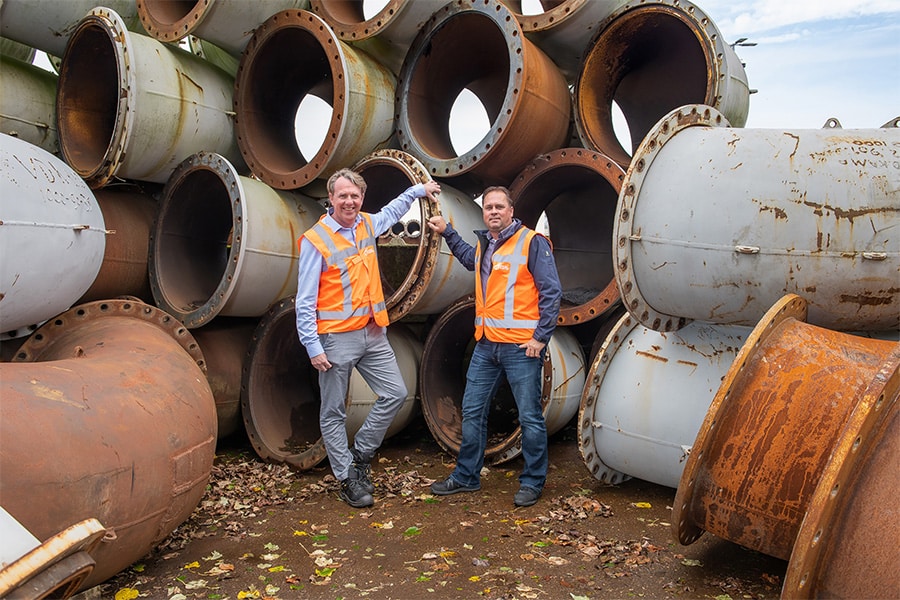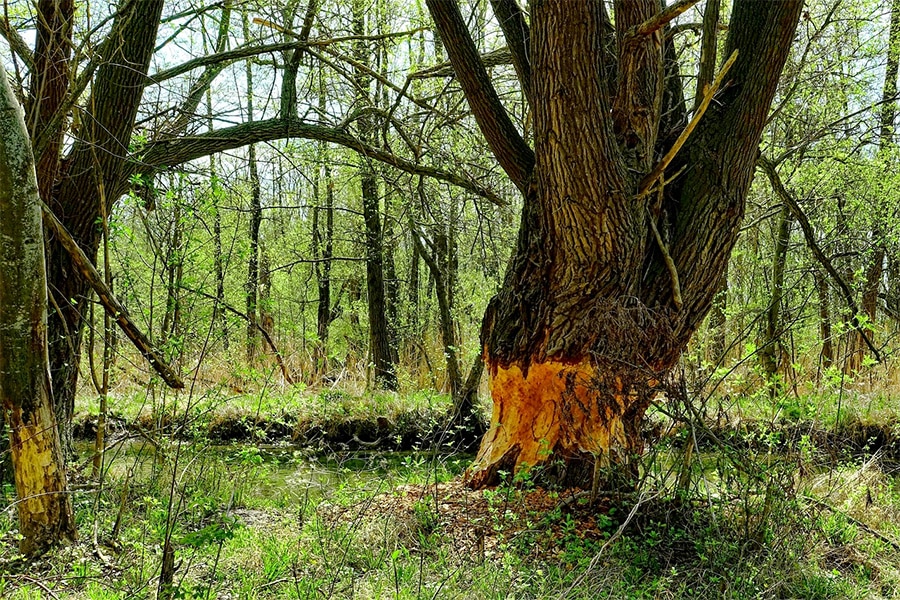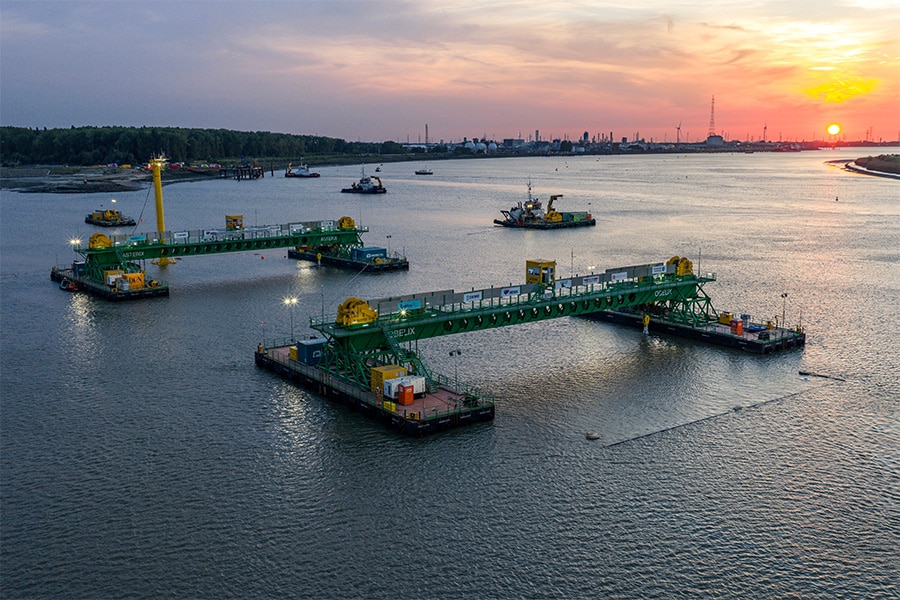
Rapid assessment of large numbers of non-water retaining objects on flood defenses
The Water Act requires that all primary flood defenses in the Netherlands be assessed for safety every 12 years. Since 2017, this is done using the Wettelijk Beoordelingsinstrumentarium (WBI 2017). Part of this includes assessing the influence of non-water retaining objects (NWOs) on the safety of the water barrier. An NWO is an object located in, on or near the water barrier that may have a negative impact on the stability and safety of the water barrier. Examples include trees, buildings and pipes.
The Schieland and Krimperwaard Water Board (HHSK) has almost 18,000 trees and over 3,000 buildings in, on and near its 70 km of primary flood defenses. The influence of all these objects on water safety must be assessed. However, the standard assessment method according to the WBI2017 is less suitable for large numbers of objects. To assess the NWOs of HHSK, Iv-Infra and TAUW have jointly developed a method suitable for large numbers of objects. The method falls within the 'Toets op Maat' of the WBI2017.
Method requirements
In order to assess large numbers, it is desirable to limit the number of individual calculations and the data required. In addition, the method must be suitable for automation so that as little manual work as possible is necessary. A second requirement, in the context of the duty of care, was that not only the influence of the objects on the failure probability within the 'standard' failure mechanisms be included, but also that an assessment of the objects themselves be given. This in fact makes it easier to shape management and policy, for example by cutting down certain trees that pose a hazard.
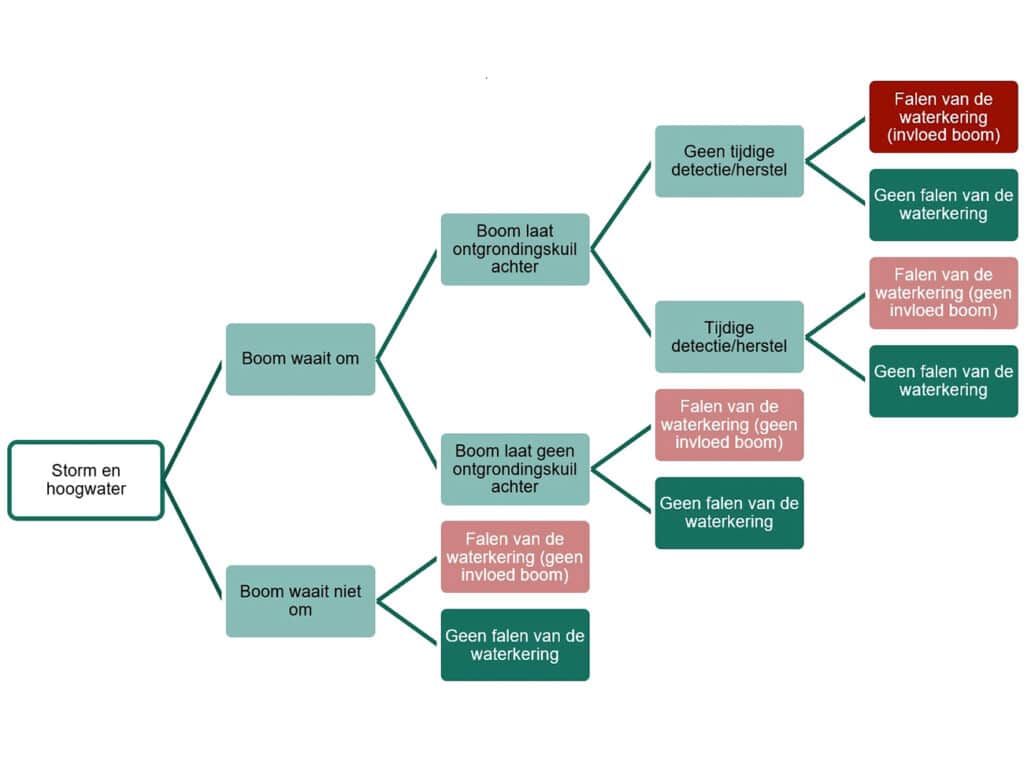
Classification of objects into risk classes
The first step of the developed method is to assign a risk class between I (negligible risk) and V (high risk) to all objects. The risk class of an object is determined by looking at the failure path, or in other words the events that must occur successively before flooding occurs. This is done per failure mechanism (macrostability, piping, etc.) and per zone of the cross-section (crest of the barrier, inner slope, etc.) in which the object is located. Probabilities per event are estimated by expert judgement. The more events must occur consecutively and the smaller the probability of occurrence per event, the lower the risk class. When assigning the risk class, the (already performed) 'regular' assessment of the dike section is also taken into account.
To classify the objects in risk classes, only information about the location of the object on the water barrier is needed. By then combining the risk class with the category in which the WBI assessment of the dike section falls, an initial assessment can be made. If both the failure probability of the dike section and the risk class of the object are low, the object can be 'approved'; if not, the assessment is continued. The advantage of this is that in the next assessment round this assessment of the objects can easily be updated by entering the results of the new assessment of the dike body (the risk classes remain the same in principle).
Calculation of failure probability by influence factor
The objects that are not approved based on the risk class are divided into clusters based on the failure mechanism, the zone of the water barrier and characteristics of the dike. For each cluster, the normative object is determined, for which a calculation is then performed. By considering only the normative object per cluster, the total number of calculations remains limited. A total of 74 clusters have been distinguished for this project.
For each cluster, the existing calculation of the dike body is modified to include the influence of the object, for example, by schematizing an excavation pit (due to a fallen tree) in the stability calculation. By comparing the failure frequencies of these calculations, an "influence factor" can be determined, which indicates how much larger the failure probability becomes by including the influence of the NWO. This factor is then applied to the failure probability of all dike sections with objects within this cluster. If the failure probability of the dike section with the influence of the NWO falls in the same category as without the NWO, all objects in the cluster in the specific dike section are approved. If the category does change, the objects are rejected, noting that tightening is possible by considering the remaining objects individually.
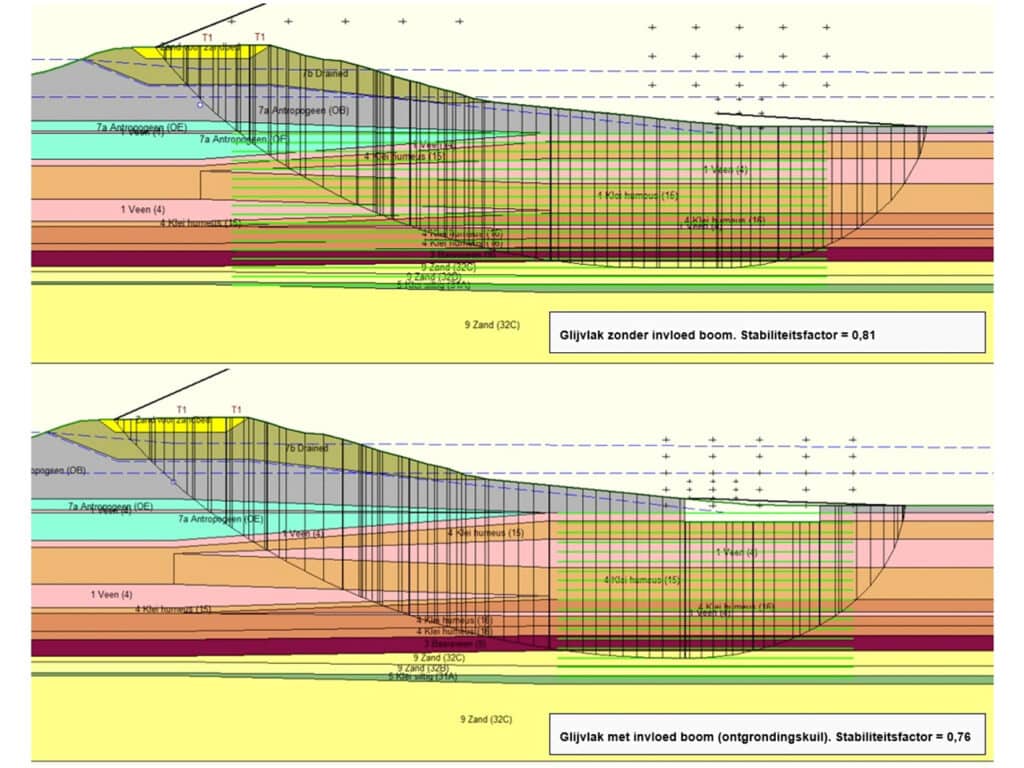
Automation
To quickly test the large numbers of objects, large parts of the method were automated. For example, Iv-Infra's 3D scanning car drove over the dike, creating a point cloud of the dike's surroundings. Based on this point cloud, self-developed scripts can recognize objects and derive parameters such as tree heights and trunk diameters.
GIS scripts were then used to generate a cross section profile for each object, on the basis of which it was determined in which zone of the water barrier the object is located and in which test section (per failure mechanism) the object is located. Based on the test section, the category of the assessment of the dike body and the most important data of the failure mechanism are linked to the object. In this way a risk class and (after classifying the objects in clusters) an influence factor can be determined automatically.
Results
Based on the classification into risk classes, more than 9,000 of the almost 18,000 trees and about 1,700 of the 3,000 buildings could be approved immediately. Of the remaining objects, about 6,000 trees and 1,200 buildings could not (yet) be assessed because the WBI assessment of the dike body had not yet been carried out. The remaining objects were further assessed on the basis of clustering and determining the influence factor. This ultimately resulted in all buildings, and most of the trees, being able to be approved.
238 trees have been "rejected" for one or more failure mechanisms. The main reason for this is that they are located on the outer slope or crest of the water barrier, where this barrier consists largely of sand. When these trees blow over, they can cause a hole in the revetment of the water barrier, which can quickly erode the dike body during a normative storm. Because the occurrence of this storm is correlated with the blowing down of the trees, the chance of timely recovery is small, unlike most other objects.
